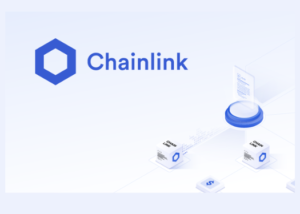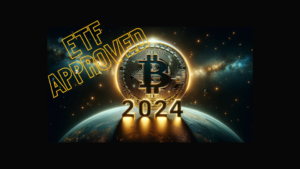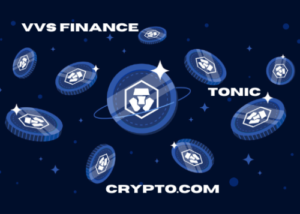VeChain, a groundbreaking blockchain platform designed for business processes, continues to carve a niche in the cryptocurrency sphere. Its innovative approach, which uses VeThor, its native gas token, establishes an interconnected ecosystem set to revolutionize the way businesses operate. This article delves into the intricacies of VeChain and VeThor and how they play a pivotal role in advancing towards a Web 3.0 future.
Table of Contents
VeChain A New Era for Enterprise
Founded in 2015, VeChain is a blockchain-based platform that strives to enhance supply chain management and business processes. It uses distributed ledger technology (DLT) to provide retailers and consumers with the ability to determine the quality and authenticity of products purchased.
The VeChain Thor blockchain is at the heart of VeChain. It operates on a two-token system: VeChain Token (VET) and VeChain Thor Energy (VTHO). Vechain is used to store and transfer value in the VeChain ecosystem, whereas VTHO is used for power transactions and smart contract interactions, akin to gas in the Ethereum network.
This unique two-token system is designed to separate the costs of using blockchain from those of market speculation. By doing so, Vet enables businesses to use its blockchain without being exposed to volatile cryptocurrency market conditions.
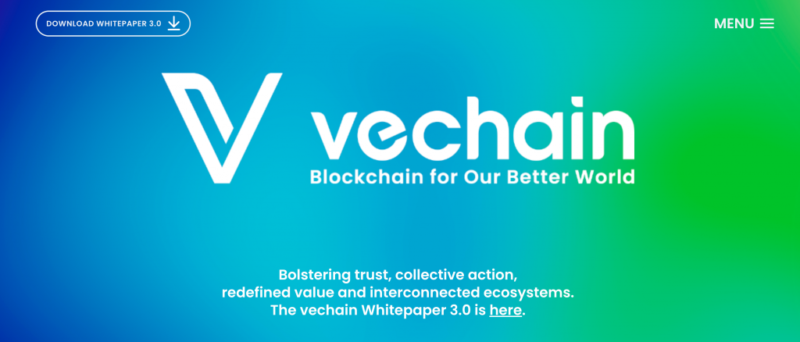
VeThor Powering the VeChain Ecosystem
VeThor (VTHO) is essentially the energy, or “gas,” that powers transactions and smart contracts on the VeChain Thor blockchain. This is automatically generated by holding a VET in a blockchain wallet. The role of the VTHO in this ecosystem is pivotal, as it is used to pay for the execution of transactions and smart contracts.
This unique VET-VTHO model promotes a self-sustaining blockchain economy. As more enterprises use VET to meet their supply chain needs, the demand for VTHO increases. This results in an increased valuation of VET because holding VET generates VTHO. This cycle makes the VeChain ecosystem a self-driving engine of growth.
The Web 3.0 Connection
Web 3.0, often termed the ‘semantic web,’ is the envisioned next-generation Internet. It will see data and machines interacting in sophisticated and seamless ways with minimal human intervention. Blockchain technology plays a significant role in the transition to this new era of the web.
VeChain, with its focus on business and enterprise use cases, is perfectly poised to contribute to the Web 3.0 future. The platform’s transparency, immutability, and decentralization make it an ideal solution for businesses looking to benefit from Web 3.0.
An example of this potential is visible in VeChain’s approach to supply chain management. Web 3.0’s emphasis on data and semantic understanding can revolutionize the way supply chains work. VeChain’s system provides a reliable and tamper-proof record of the product lifecycle, from manufacturing to end consumers, which aligns perfectly with the goals of a Web 3.0 world.
VeChain’s ToolChain, a Blockchain as a Service (BaaS) platform, further exemplifies this connection. It allows businesses of any size or technical capability to implement and use blockchain technology, thus making the power of the decentralized web more accessible.
Interconnected Ecosystems
VeChain and VeThor form a highly synergistic and interconnected ecosystem. VeChain provides the primary blockchain platform for enterprise-level applications, whereas VeThor provides the necessary energy to execute these applications.
This interconnected ecosystem paves the way for more efficient and transparent business processes. For instance, VeChain’s blockchain technology and smart contracts can significantly improve complex supply chain models, ensure seamless and secure data flow, and benefit all stakeholders.
At the same time, the growth and expansion of this ecosystem contributes to the broader development of the Web 3.0 landscape. Vet is driving the adoption of blockchain technology in traditional industries, pushing us closer to a future in which all data and machines can interact in an intelligent, seamless, and automated manner.
Use Cases of VeChain and VeThor
Vet has gained adoption across many industries for a variety of use cases, demonstrating its strong versatility
Supply Chain and Logistics
Vet’s most prominent use case is in supply chain and logistics. VeChain’s DLT enables manufacturers to assign products unique identities, which they use to log information throughout the product’s lifecycle. This functionality not only prevents counterfeit items from infiltrating the supply chain but also allows consumers to verify product authenticity. A notable example of this application is in the wine industry, where VeChain is used to combat the proliferation of counterfeit wines.
Luxury Goods
Vet has been implemented in the luxury goods industry to provide proof of authenticity for high-value products. Renowned entities such as Givenchy have used VeChain’s technology to allow customers to verify the authenticity of their luxury items and track their repair and maintenance histories.
Automotive Industry
In the automotive industry, Vet partnered with BMW to develop VerifyCar, a digital car maintenance book. The app records and stores all vehicle data, making the history of a car transparent and immutable.
Healthcare
In healthcare, Vet provides traceability for medical devices and drugs, ensuring that the supply chain remains unadulterated and consumers receive genuine products. During the COVID-19 pandemic, Vet was used for blockchain-enabled medical records to enhance the privacy and security of patient data.
Strategic Partnerships
Vet’s success is partly due to its strategic partnerships. For instance, it has partnered with PricewaterhouseCoopers (PwC) to increase blockchain adoption in Hong Kong and Southeast Asia. Moreover, the partnership with DNV GL, a global quality assurance and risk management company, has led to the creation of My Story, an application that provides detailed information about a product’s history to consumers.
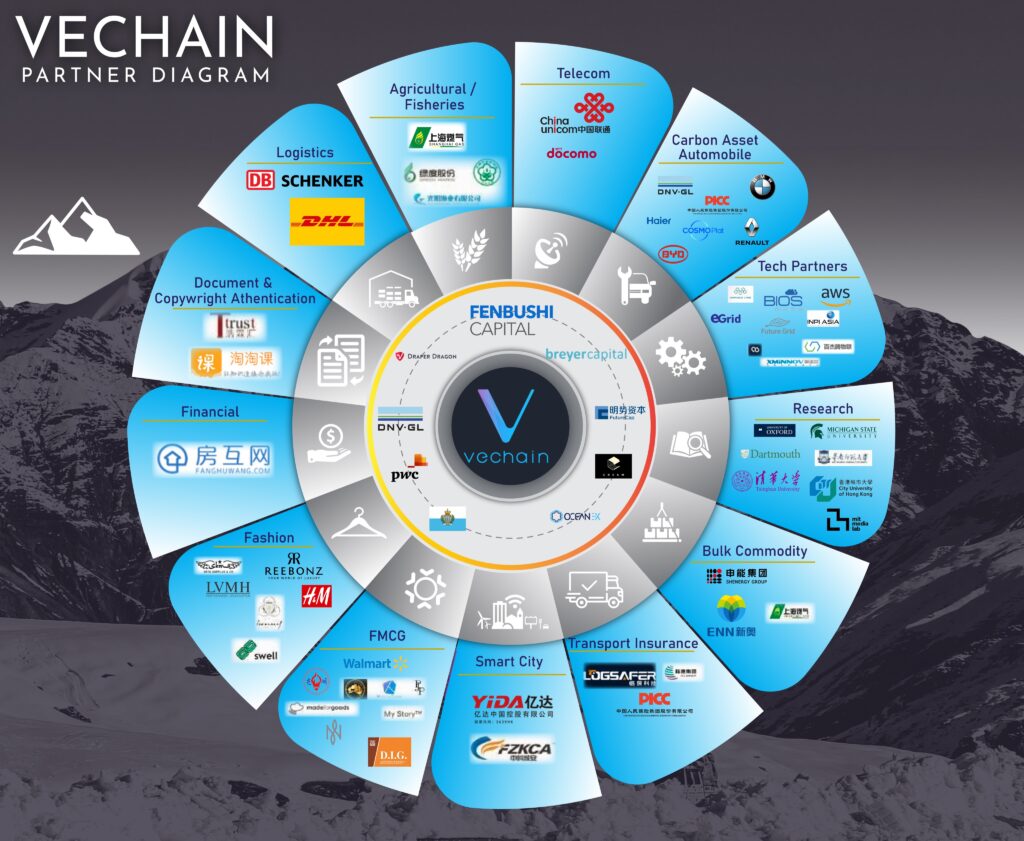
Future Developments and Potential
Vet is constantly exploring new avenues for its blockchain. With the advent of Web 3.0, the platform’s potential has become more significant than ever before. The enterprise is keen on developing solutions for the Internet of Things (IoT), Decentralized Finance (DeFi), and even carbon credit trading in collaboration with its partner, DNV GL.
In the IoT space, Vet’s blockchain can be used to manage vast networks of devices securely and efficiently, as each device can be assigned a unique identity on the blockchain. In DeFi, Vet can provide infrastructure for creating decentralized apps that offer financial services without the need for intermediaries. For carbon trading, Vechain could enable secure and transparent tracking of carbon emissions, facilitating the trade of carbon credits.
Using the two-pronged approach of Vet and VeThor, this innovative platform presents a future-forward vision for blockchain technology. Vet’s versatility is reflected in its myriad use cases across different industries, while its strategic partnerships amplify its reach and efficacy.
As we approach Web 3.0, VeChain, with its focus on enterprise-level applications, IoT, and DeFi, is spearheading the shift towards a decentralized, interconnected, and transparent digital future. Whether it’s revolutionizing supply chains or contributing to the fight against counterfeiting, this ecosystem exemplifies the transformative power of blockchain. As such, it underscores the paradigm shift that blockchain technology represents, not just for business processes but also for society at large.


